Barolo and Barbaresco are both Italian red wines made with the Nebbiolo grape. They come from the Langhe area of the Piedmont region in Italy, and in addition to being two of the most famous Italian reds, they are also some of the best wines you can find for aging.
While there are a lot of similarities between Barolo and Barbaresco, there are also a few key differences:
Where they’re grown.
Barolo is grown across a much larger and higher altitude area than Barbaresco and has multiple districts within it. Barbaresco comes from a different part of the region, farther north, where the land is lower and there’s more sand in the soil.
How they taste.
Barolo is a wine with a more structured feel to it and a higher alcohol content. Barbaresco tends to be lighter in color and intensity and can be described as more elegant and feminine, whereas the Barolos are more intense and bigger wines. In fact, Barolo is sometimes referred to as the king of the Langhe region and Barbaresco, the queen.
How they’re made.
There’s also a difference in how each wine is made. Barolo must be aged for 38 months before it can be released and it spends at least 18 months in oak, vs a Barbaresco which is aged for a minimum of 26 months and spends at least 9 of those in oak. The minimum alcohol content for Barbaresco is 12.5% vs Barolo which is 13%.
How they age.
You’ll find a Barolo often needs more aging compared to a Barbaresco, before it’s ready to drink. However, the most important take away if you’re new to these wines is pay attention to the vintage you’re drinking. Barolo and Barbaresco are best when they’ve been aged for a period of years.
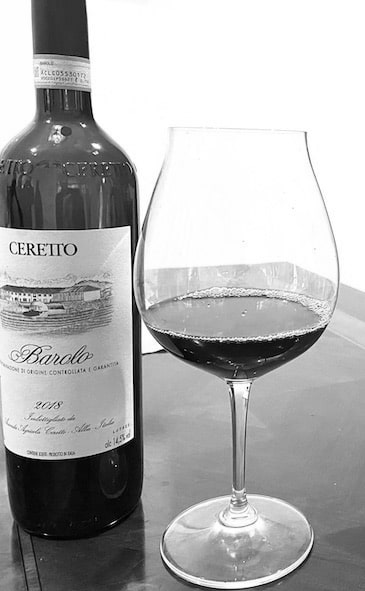
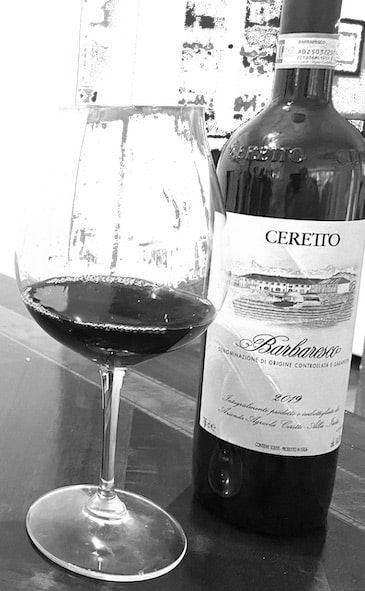
The Nebbiolo grape
Nebbiolo is named after the fog that covers the vineyards in both the fall and winter. It is an early-blooming and late-ripening grape that is usually planted in the middle of the Langhe Hills where it receives the most sun and warmth.
Like Pinot Noir from Burgundy, Nebbiolo has high acidity and needs to spend a longer time on the vine before it’s ready to be picked. This means it’s not always easy to grow and subtle differences in soil and climate can influence Nebbiolo wines.
Wine Tip: The beauty of a wine like Barolo is that differences in terroir (soil composition, altitude, sun exposure, and general climate) can influence the wine produced from grapes grown in specific areas of vineyards. This happens in Burgundy too, where wine produced from grapes grown in one part of a vineyard can have its own unique characteristics, compared to wine from another part of the same vineyard.
Barolo vs Barbaresco

The soil where Barolo and Barbaresco are grown is a mixture of fine grained minerals and clay. However, Barbaresco specific regions tend to have higher sand content. There’s also greater variety in soil composition in Barolo vs Barbaresco, and thus more differences in the resulting wines.
Barolo is divided into 11 comunes and 181 separate geographic designations vs Barbaresco which has only four major comunes and 66 geographic designations. Barbaresco is also closer to the Tanaro River and at a lower altitude than the hills of Barolo. The warmer climate means the Nebbiolo grape may ripen sooner in Barbaresco regions.
What do they have in common?
- Color. Barbaresco and Barolo can range from medium garnet in color, to a very light ruby shade.
- Flavors. In a Nebbiolo wine you can taste red fruit flavors, including cherry, raspberry, plum and strawberry. You may also note rose, licorice, tar and other earthy tones.
- Structure. The undercurrents of minerality and the tannins in the Nebbiolo grape are what gives wines like Barolo and Barbaresco their great structure and longevity.
The history of Barolo and Barbaresco
In the past, Barolo was considered a good wine, but it wasn’t quite at the level it is today. That’s because before the 1980s winemakers often left the Nebbiolo grape fermenting on its skins for longer amounts of time, resulting in a more rustic style of wine that wasn’t really enjoyable to drink unless it had been aged for at least 10 to 12 years. Nebbiolo has a lot of tannins and these wines could be quite closed. However, an economic crash led to a rebirth of the wine industry here and Barolo and Barbaresco saw major changes in how they were made.
Many young Barolo winery owners traveled to France and studied with the great winemakers of the Burgundy Pinot Noirs. They then took what they had learned and applied it to their own wine making, reducing maceration periods and changing the kinds and sizes of the wood barrels used to age the wine. These changes helped them better manage tannins and capture more of the fruit flavors of the Nebbiolo.

Differences among Barolo regions
The major communes or villages of Barolo are: La Morra, Barolo, Castiglione Falletto, Monforte D’Alba, and Serralunga d’Alba and these are considered the best growing areas. The soils of La Morra, Barolo and Castiglione Falleto have a slightly different composition and produce wines that are more aromatic and elegant. Monforte and Serralunga tend to produce wine that is more powerful and structured and that can also be aged for longer.
Barolo Wine Tip: Most producers in the region have a Barolo Classique which is a blended wine made from grapes from several of the communes. However, they will also produce single estate wines from specific sites.
All about Barbaresco
Barbaresco is a wine that’s traditionally lighter and not as structured as Barolo. It will often have more finesse and be drinkable at an earlier age than a Barolo. There are four major growing areas for Barbaresco: Barbaresco, Neive, Treiso and San Rocco Seno d’Elvio. Wines from Barbaresco are considered to be the highest quality and the best known producers tend to be from here. Two Barbaresco producers, Gaja and Giacosa, were part of the team that really put this wine on the map and helped it achieve the quality level we recognize today.
How to choose a vintage
A vintage means the year the grapes were grown. Because Barolo is a wine that needs to age before it can be fully enjoyed and appreciated, you have to pay attention to the vintage you’re buying. In the past, there weren’t many vintages classed as Very Good or Great, but climate change has been a blessing for the Nebbiolo in the Langhe. Since 2005 on, almost every vintage has been Very Good or Excellent with 2010, 2013 and 2016 standing out as exceptional.
How much can you expect to pay?
Barolo and Barbaresco can cost anywhere from $35 to $200, but on average you will pay around $45-75 a bottle. Quality tends to be high across the board for these wines – you’re unlikely to encounter a bad Barolo, ever! This means price is more based on supply and demand. In general, you will find the Barolo Classique, which is a blend of wine from different vineyards, is usually lower priced vs single vineyard wines. Riserva wines will be more expensive. They are made from the highest quality grapes, which can be higher in sugar content and withstand more oak aging. A Barolo Riserva will have over 5 years and 2 months of aging, with a minimum 18 months spent in barrels vs a Barbaresco Riserva which would have 4 years and 2 months of aging with 9 in oak. Expect to pay 20 to 30% more for riserva wines.
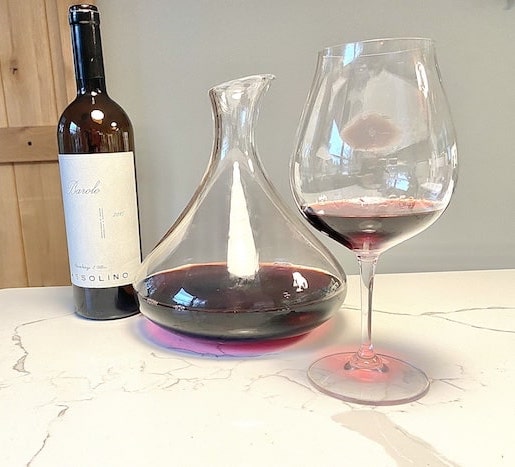
6 Top tips for drinking a Barolo
- Pay attention to the vintage. Ideally, you should give a Barolo 6 to 8 years to age before you drink it. However, that’s not always possible and you may only find younger Barolo on the shelves when you go to the store. Keep in mind each Barolo vintage is unique and some years produce wine that is more approachable, meaning it can be drunk younger, than others. You can Google a vintage chart to see how accessible the wine is.
- Decant the wine. No matter what their age, bottles of Barolo and Barbaresco need to be decanted. This gives the wine a chance to breathe and open up so you can fully taste the fruit flavors. If you are drinking a wine that’s on the younger side, you can decant it 5 hours or even a day before drinking. Take care not to cover the top of the decanter so the wine gets more exposure to oxygen.
- Choose your wine glass carefully. The best glass for Barolo is either a new world Pinot Noir or what’s considered a red Burgundy glass. These glasses have a large bowl and a more narrow opening at the top, which helps to funnel the wine into the center of your tongue so you taste the fruit flavors. Barolo and Barbaresco are wines with high acidity so you don’t need the glass to spread the wine across your mouth when you taste it (as you do for a Cabernet).
- Consider the temperature of the wine. Barolo should be served at 58 to 65 degrees Fahrenheit. If the wine is any warmer, you will taste more of the alcohol vs the fruit. This means you may need to chill the wines before drinking.
- Take notes on what you see and taste. These wines can be quite light in color and not nearly as opaque as a Cabernet. You may also notice a different color at the edge of the glass, namely an orange rim on the wine. Don’t be fooled by their lighter color, Barolo and Barbaresco are full flavored and intense.
- Call ahead to the restaurant. Barolo is a wine you want to have with food. If you’re going out, consider not all restaurants have the capacity to keep older Barolo on hand. You may want them to decant your wine before you arrive if the bottle you’ve ordered is a more recent vintage.
Food pairings for Barolo and Barbaresco
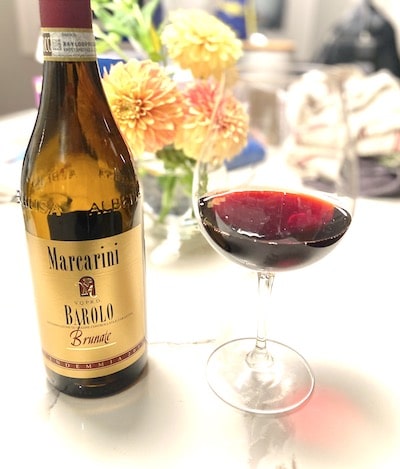
Because Nebbiolo wines are medium in body, they tend to go well with slow roasted meat dishes that have different spices and layered flavors, for example, Beef Bourguignon, Veal Osso Buco or Lamb Shank. Another good food pairing is rock Cornish hens; these wines complement duck and pheasant too. When you’re having Italian, look for pasta dishes with wild boar or earthy toned dishes from northern Italy made with truffles and mushrooms. Overall, these wines are best to enjoy with food and are not something you drink on their own or with appetizers – with the exception perhaps of a wine and cheese pairing.
Storing wine in your cellar
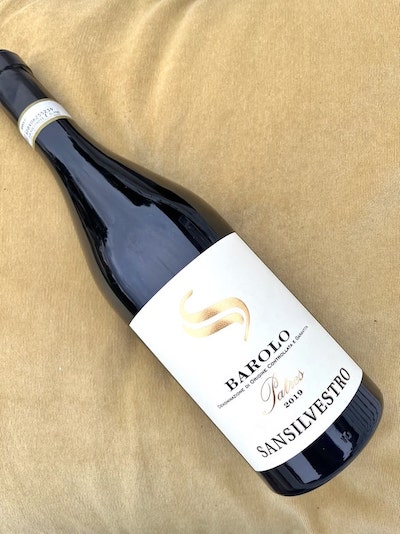
Compared to the wines of Bordeaux and Burgundy, Barolo and Barbaresco are relatively affordable bottles that you can buy and put in your cellar to age for a number of years. You might purchase this wine to celebrate a wedding or the birth of a child, and then plan to open it many years down the line at the anniversary of that special occasion, for example, a 21st birthday party!
You can store a Barolo for 35 years and a Barbaresco for 25. Keep your bottles of wine somewhere cool and dark, like a field stone cellar or at the bottom of a closet if you don’t have a wine cellar. Always ensure the bottles are on their side so the cork stays moist. Take note of the humidity levels in your cellar too, as you don’t want the wines to dry out.
You will note that Barolo and Barbaresco can have different shaped bottles. They may look like a Cabernet or a Pinot Noir (so they’ll have a Bordeaux or Burgundy bottle shape). While most wine growing areas have a particular bottle shape, this is not the case in this part of Italy.
More on wines from Piedmont
Of the many wine growing regions in Italy, Piedmont is the second largest and has the largest number of DOCGs and DOCs of all Italian growing regions. DOCG stands for Denominazione di Origine Controllata e Garantita and is the highest classification for wine quality in Italy.
Like Burgundy, Piedmont tends to have more smaller-production wineries. This means that compared to other famous Italian winegrowing regions, like Tuscany, you’ll find the Langhe divided into a larger number of smaller vineyards.
Barbera is the most commonly grown grape variety in Piedmont, followed by Moscato. Next is Dolcetto, and then Nebbiolo, which is approximately 9% of what’s cultivated in this part of Italy. Cortese, used in Gavi wines, and Arneis, are the two largest production white grapes from Piedmont.

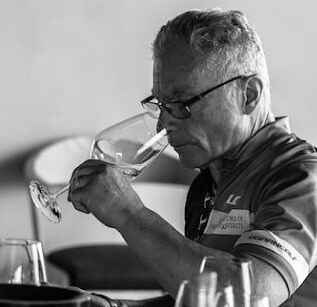
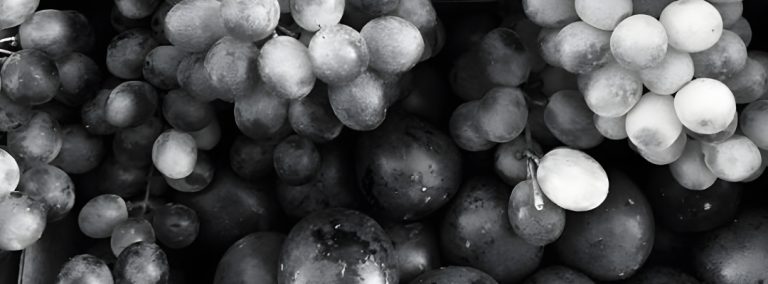



We love CA WINES, but my favorite is Barolo.
It’s hard for Barolo not to be a favorite!